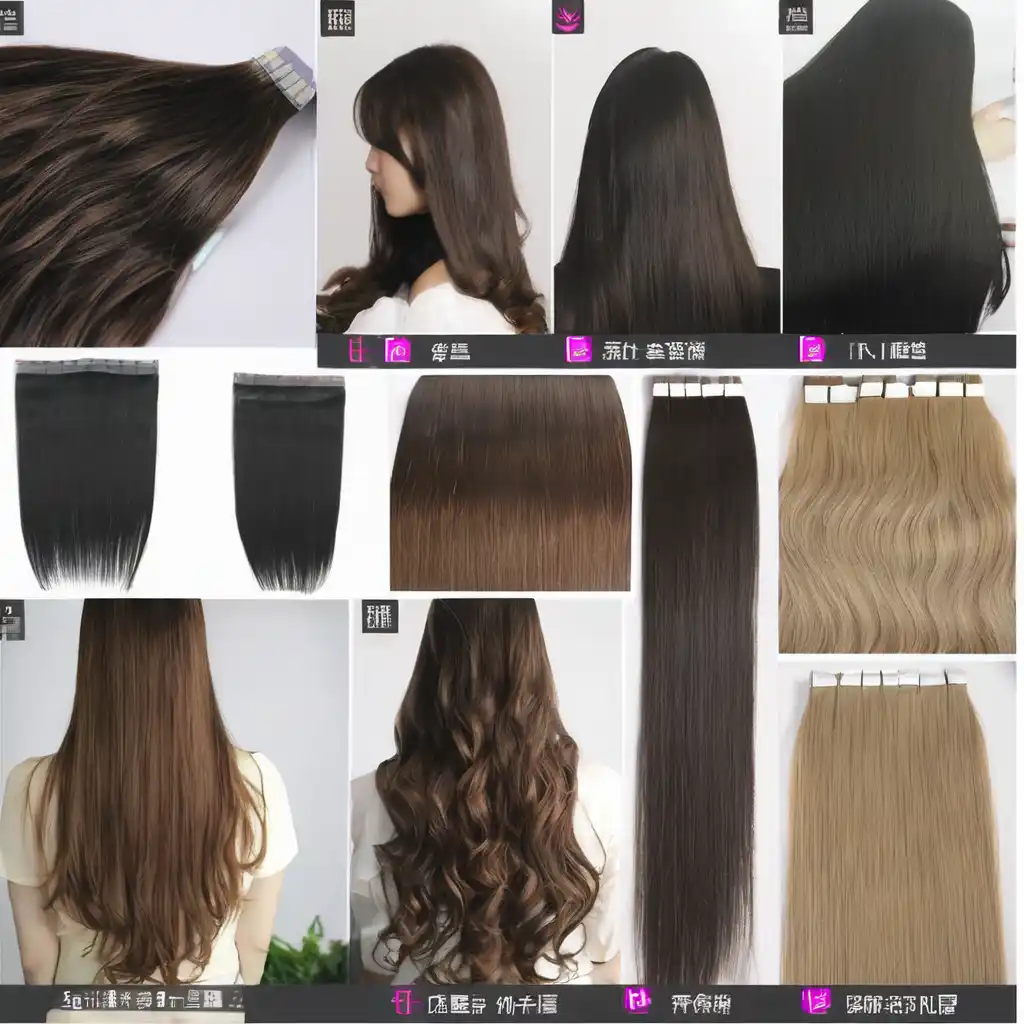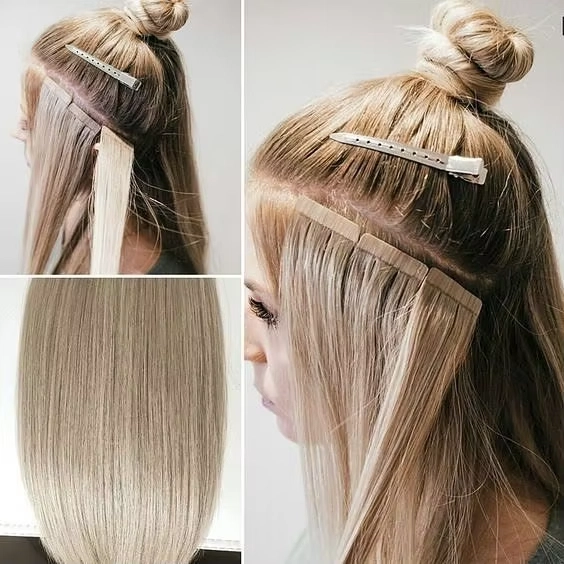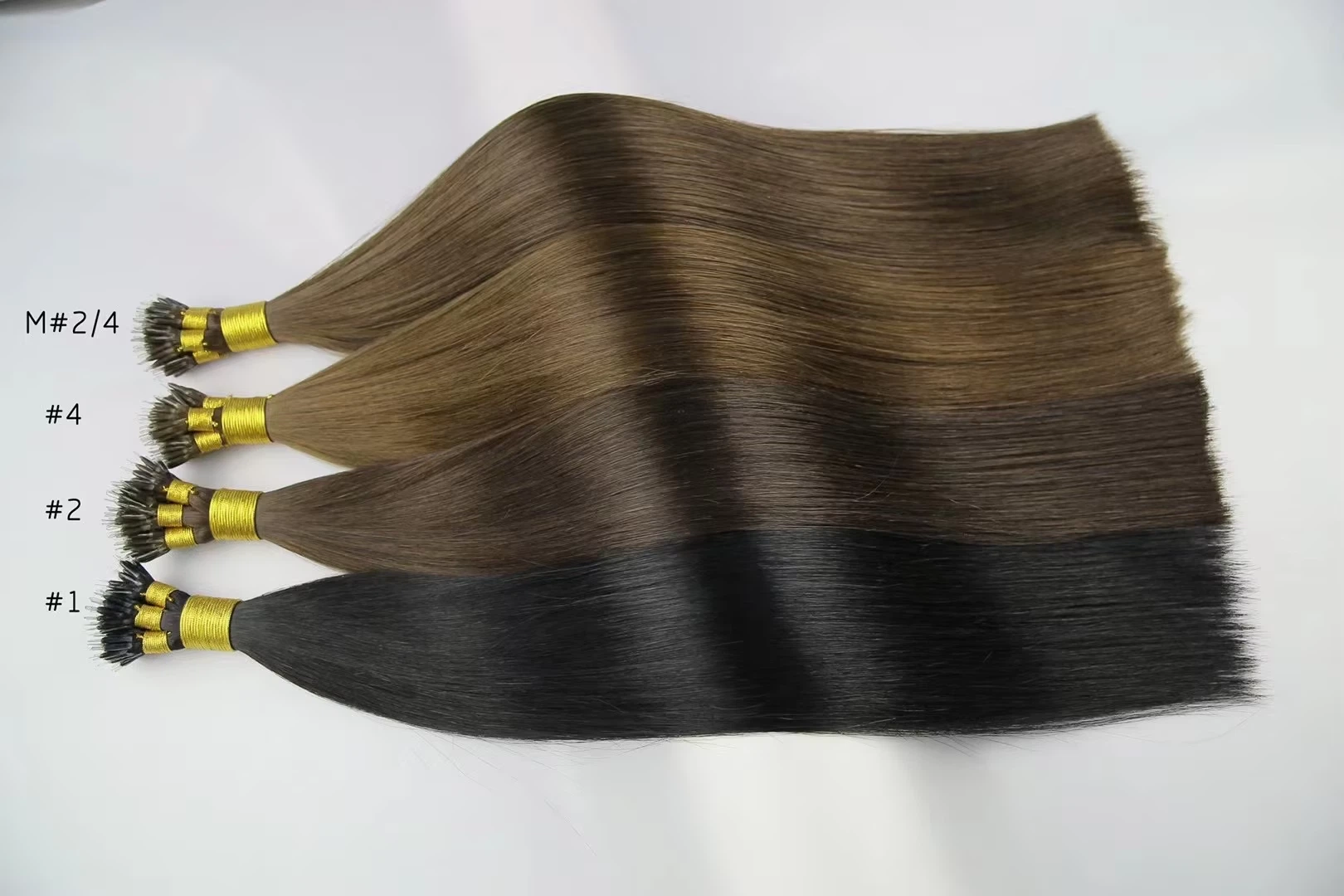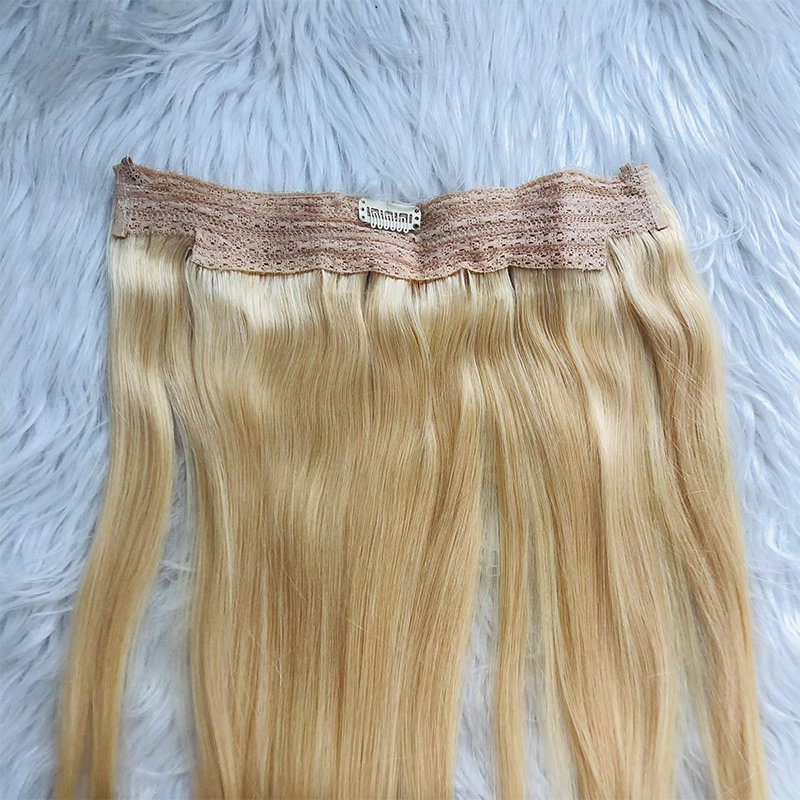1. Cost of Tape-In Hair Extensions: Pros and Cons
The cost of tape-in hair extensions can vary significantly based on factors such as the length, quality of the hair, and the brand. On average, a pack of tape-in extensions costs between $200 to $600. Higher-end options, like 100% Remy human hair, tend to be on the more expensive side, while synthetic blends or lower-grade hair fall at the lower end of the price spectrum. Installation costs should also be considered, with professional stylists typically charging an additional $100 to $300 for application. For instance, a 20-inch pack of high-quality Remy tape-in extensions could cost around $350, including installation. This compares favorably to other methods, like fusion or sew-in extensions, which can easily exceed $1,000 for similar lengths and quality, making tape-ins a more cost-effective option for those seeking semi-permanent solutions.
Pros: The relatively lower upfront cost and the ability to reuse the hair up to 3 times with proper care are major advantages. Tape-in extensions also offer a faster and more affordable installation process compared to other types. For example, micro-link or fusion extensions, while offering longer-lasting results, require 3 to 4 hours for application and cost significantly more in both materials and stylist fees. This makes tape-ins a great option for those seeking a beautiful, natural look without breaking the bank.
Cons: Despite the lower initial costs, maintenance can add up over time. Tape-ins need to be reinstalled every 6 to 8 weeks as the hair grows, and each reinstallation may cost around $150. Over the course of a year, the total upkeep for reinstallation alone could range from $900 to $1,500. For some, this ongoing maintenance expense may become a significant investment. Additionally, the hair itself may eventually need to be replaced, further increasing the overall yearly cost. Therefore, while tape-in extensions are initially affordable, it’s essential to factor in long-term maintenance when budgeting for this beauty solution.
2. Application Time of Tape-In Hair Extensions: Pros and Cons
One of the key advantages of tape-in hair extensions is their quick and efficient application time. A full head of tape-in extensions typically takes between 60 to 90 minutes to apply, which is significantly faster than many other types of hair extensions. For instance, sew-in extensions can require 3 to 4 hours to install, making tape-ins a more convenient option for those with busy schedules or those seeking a quick beauty transformation. This short application time is particularly attractive to both clients and stylists, as it allows for faster appointments without compromising the quality of the results. In comparison, methods like micro-link or fusion extensions can take several hours to apply, making tape-ins an excellent choice for anyone looking for a time-saving solution.
Pros: The quick application time not only reduces the time spent in the salon but also lowers the labor costs associated with installation. For instance, if you are paying a stylist $100 per hour for their services, tape-ins could cost around $150 to $250 for application, compared to upwards of $400 or more for the longer, more labor-intensive methods. Additionally, because the tape-in method does not require heat or complex tools, it’s a less invasive process, reducing the risk of damage to natural hair during the application.
Cons: Despite the fast initial installation, the removal and reinstallation process can take around 45 minutes to an hour, which can feel time-consuming if you need frequent touch-ups every 6 to 8 weeks as your natural hair grows out. While this is still faster than the maintenance required for some other methods, it is considerably more involved than clip-in extensions, which can be removed daily in just minutes. With tape-ins, the commitment is more long-term. You cannot simply take them out at the end of the day like clip-ins, and once installed, they require professional removal. This level of upkeep and time for reinstallation every few months can be a drawback for some individuals who prefer more flexibility in their hair routine.
3. Durability of Tape-In Hair Extensions: Pros and Cons
Tape-in hair extensions are known for their impressive durability, making them a popular choice for those seeking a long-lasting solution. With proper care and maintenance, tape-ins can last between 6 to 8 weeks before they need reinstallation, giving users a decent period of wear without constant upkeep. Additionally, high-quality tape-in extensions can be reused up to 3 times, providing a total of about 6 months of wear from a single pack. For example, if you invest in premium Remy human hair tape-ins, the initial cost may be higher, but the ability to reuse them multiple times offers a solid return on investment over time. In contrast, clip-in extensions, while removable and reusable, typically last only 1 to 2 years with occasional use, and they don’t offer the same seamless look or longevity in day-to-day wear.
Pros: The durability of tape-ins makes them ideal for those looking for a semi-permanent solution that doesn't require daily maintenance. They can withstand daily styling and washing if the proper precautions are taken. For example, a person with moderate hair care habits—avoiding heavy styling products and excess heat—could enjoy the same set of extensions for up to 24 weeks. This makes tape-ins a relatively low-maintenance option compared to other semi-permanent extensions that may require more frequent upkeep or professional intervention.
Cons: Despite their long-lasting nature, tape-ins can be prone to slipping or peeling if not cared for correctly. The adhesive used to bond the extensions to your natural hair can weaken if exposed to oils, heavy conditioners, or certain styling products. For instance, using oil-based serums too close to the scalp can cause the adhesive to break down, shortening the lifespan of the extensions to as little as 3 weeks. People with oily scalps or those who frequently use heated styling tools like straighteners or curling irons may find their tape-ins lose their adhesive strength more quickly. Additionally, those with an active lifestyle that includes frequent swimming or intense exercise may notice their extensions peeling or loosening sooner than expected due to exposure to moisture and sweat. This can make tape-ins less durable for those who are unable to maintain the specific care routine required to keep them in place.
4. Appearance of Tape-In Hair Extensions: Pros and Cons
Tape-in hair extensions are renowned for delivering one of the most natural-looking results available in the market. The thin, flat adhesive strips are designed to sit close to the scalp, making them virtually undetectable, even when hair is styled in updos or ponytails. This makes them an excellent option for those with fine or thin hair, as they blend seamlessly with natural strands, providing added volume and length without looking bulky or artificial. For example, women with finer hair textures often prefer tape-ins because other extension methods, like clip-ins or sew-ins, may appear too heavy or unnatural in comparison. Moreover, most tape-in extension brands offer over 30 color options, making it easier to match exact shades and tones for a flawless, natural look. This variety allows for custom blends and multi-dimensional coloring, further enhancing the natural appearance.
Pros: The thin adhesive strips used in tape-ins lie flat against the scalp, unlike bulkier methods such as sew-ins or bonds. This results in a natural flow of hair that mimics the movement of your real hair, with no noticeable bumps or knots. Tape-ins are often so undetectable that even those standing close to you wouldn’t be able to tell you’re wearing extensions. Their discreet nature and ability to blend in with natural hair have made tape-ins a favorite among stylists for creating red-carpet-ready looks.
Cons: While tape-ins look very natural initially, improper application or frequent re-taping can cause issues over time. If the extensions are not placed correctly, the adhesive strips may become visible, especially as the hair grows out. For instance, after about 4 to 5 weeks of wear, as the natural hair grows, the tapes may start to shift downward, exposing the adhesive. This can create gaps or unevenness, affecting the overall look and requiring reinstallation. Additionally, poorly applied tape-ins may tug on the natural hair, causing discomfort or even damage to the scalp. Incorrect placement, especially too close to the hairline or scalp, can result in visible adhesive strips, ruining the natural aesthetic. Proper installation by an experienced stylist is crucial to maintaining the natural look, but as the hair grows, regular touch-ups or adjustments will be necessary to ensure the extensions continue to blend seamlessly.
5. Hair Health with Tape-In Extensions: Pros and Cons
Tape-in hair extensions are often considered a gentler option for enhancing your natural hair compared to other methods like sew-ins or micro-links. One of the primary reasons for this is that tape-ins do not require the use of heat or heavy bonding agents during application. This significantly reduces the risk of hair damage and breakage. According to many hairstylists, the weight of each tape-in piece is distributed evenly across the scalp, which helps to minimize tension on the hair follicles. For example, a woman with thinning hair might find tape-ins to be a healthier alternative, as they can add volume and length without the stress that heavier extension methods might impose. Furthermore, tape-ins allow for a more natural hair movement, as they blend seamlessly with the natural texture and do not weigh the hair down.
Pros: In addition to their lightweight nature, tape-ins can be a safe choice for individuals concerned about maintaining their hair health. With the right maintenance—such as using sulfate-free shampoos and avoiding oil-based products near the adhesive—many users report little to no damage over extended wear. Tape-ins can be suitable for a variety of hair types, offering versatility without compromising hair integrity. Many users appreciate that, when applied correctly and cared for properly, tape-ins can enhance their overall hair health by providing a fuller look without resorting to more damaging techniques.
Cons: However, despite being a gentler option, improper care or installation can lead to significant hair damage. If tape-ins are not professionally installed, the adhesive may pull on the natural hair, potentially causing breakage or traction alopecia in more severe cases. A 2019 study found that 10-15% of users experienced some form of hair thinning or damage after long-term use of tape-ins, particularly if the extensions were either too heavy or not reinstalled as recommended. Those who leave their tape-ins in for too long without proper care may find that the stress on their natural hair leads to breakage and thinning. Therefore, while tape-ins can be a healthier alternative for many, it is essential to ensure they are applied and maintained correctly to fully reap the benefits without compromising hair health. Regular professional check-ups and careful adherence to maintenance guidelines are crucial to enjoying the aesthetic advantages of tape-ins while preserving your natural hair’s integrity.
Conclusion: Is Tape-In Hair Extension Right for You?
When considering whether tape-in hair extensions are right for you, it’s important to weigh the pros and cons based on your lifestyle, budget, and hair health. The affordability, quick application, and natural appearance make them an appealing choice, but the maintenance costs, potential for slippage, and the need for professional upkeep are important factors to keep in mind. Ultimately, if you're seeking a semi-permanent, low-maintenance solution with a natural look, tape-ins could be a perfect fit, provided you're ready to invest in regular care and installations.
Tape-In Hair Extensions Manufacturer
Emeda Hair is a leading manufacturer and wholesaler of premium Tape-In Hair Extensions, serving customers worldwide. With a strong focus on quality and innovation, we offer a wide range of hair extension products, including 100% Remy human hair and high-quality synthetic options, catering to diverse styles and price points. Our Tape-In Hair Extensions are designed for easy application, offering a seamless, natural look with minimal upkeep, making them a favorite among professional stylists and salons globally.
We take pride in providing over 30 color options, various lengths, and textures to suit every client's needs. Rigorous quality control ensures that our extensions are durable, ethically sourced, and of the highest standard. Our commitment to customer satisfaction includes competitive wholesale pricing, timely global shipping, and dedicated customer support.
Whether you are looking to stock your salon, expand your beauty supply store, or partner with a trusted supplier, Emeda Hair is here to meet your business needs. Our team is ready to assist with product inquiries, custom orders, and wholesale opportunities to help you grow your business in the beauty industry.

146.webp)



516.webp)
 (1)951.webp)